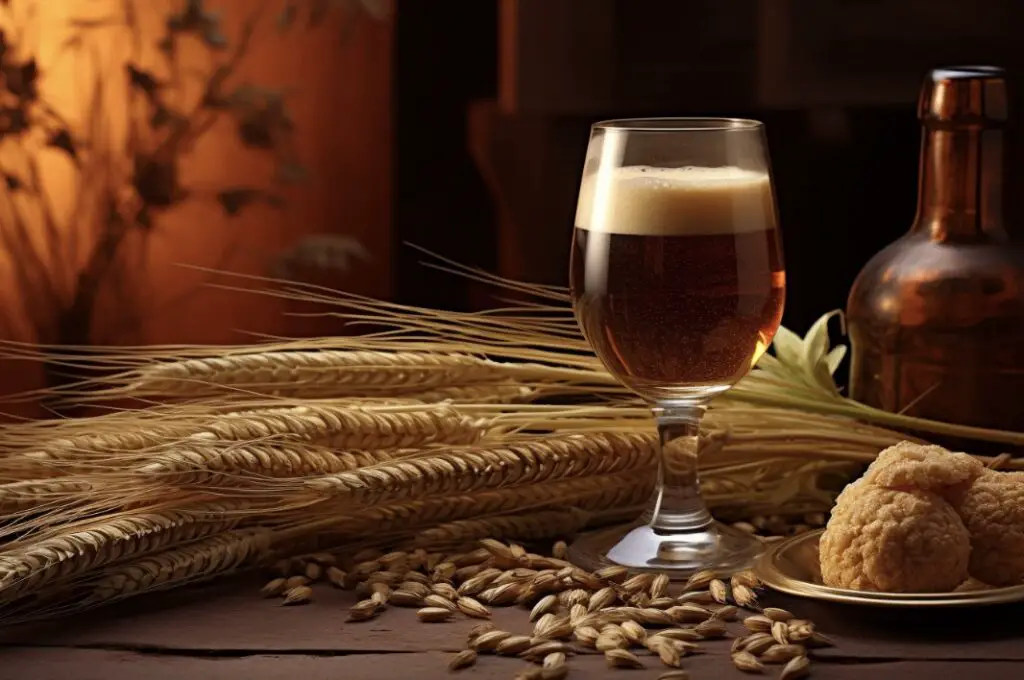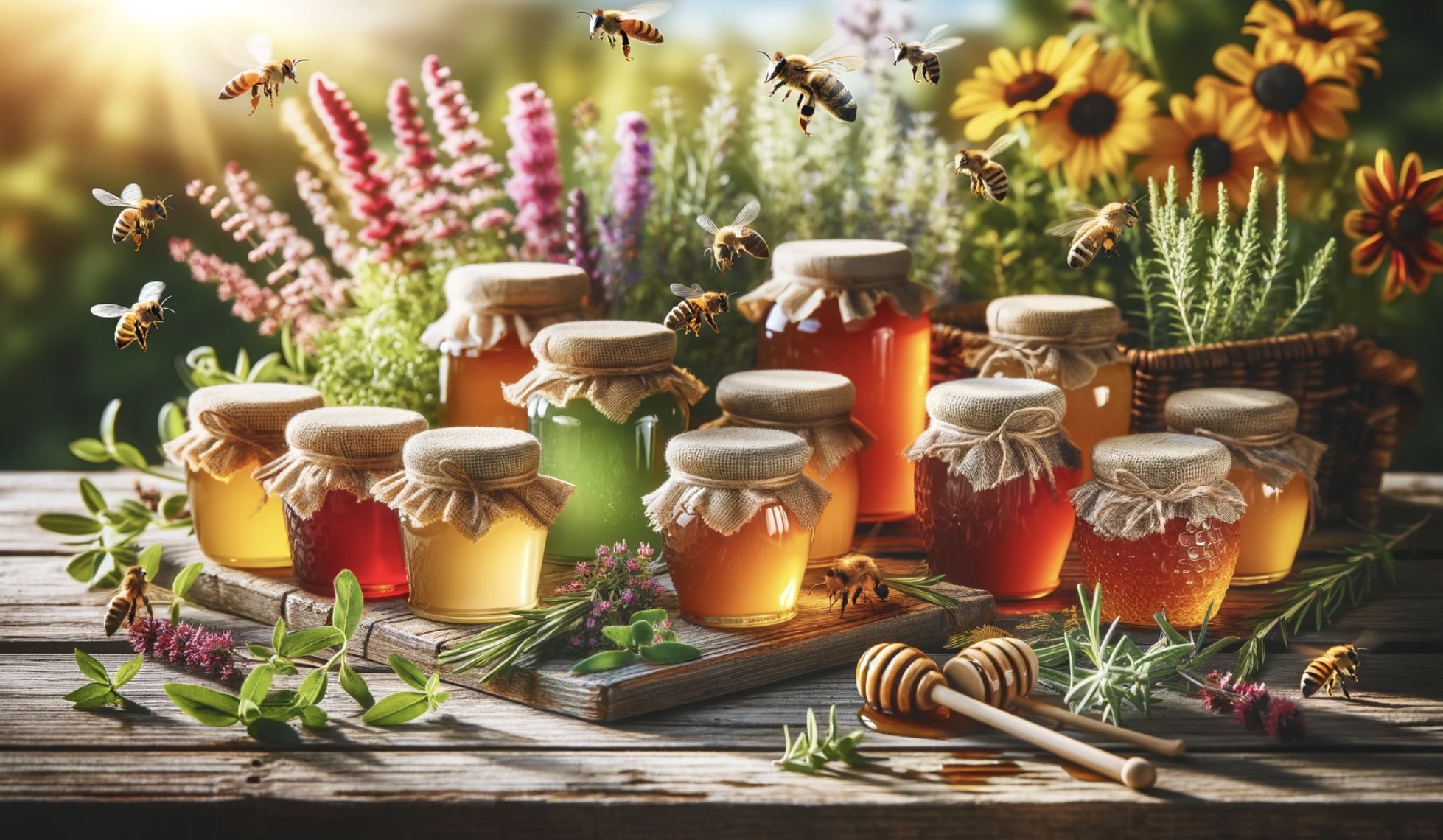Barley wine is a strong and complex beer style that has a rich history and a wide range of flavors. It is a beer that is often aged and savored, like a fine wine.
Many beer enthusiasts consider barley wine to be the pinnacle of brewing art.
In this blog post, I will dive deep into the world of barley wine, exploring its history, brewing process, characteristics, and more.
So, grab a glass of your favorite barley wine and join me on this journey.
A Brief History of Barley Wine
Barley wine has a storied history that dates back centuries. The term “barley wine” was first used in England in the 18th century to describe a strong ale that had a similar alcohol content to wine.

This style of beer was initially brewed as a winter warmer, meant to be consumed during the colder months to help stave off the chill.
Throughout the years, barley wine has evolved and spread to other countries, including the United States. American barley wines, which are typically hoppier than their English counterparts, gained popularity during the craft beer revolution of the 1980s and 1990s.
The Father of Barley Wine: Thomas Hardy’s Ale
One of the most famous and sought-after barley wines is Thomas Hardy’s Ale, first brewed in 1968 by the Eldridge Pope brewery in Dorchester, England.
This beer was named after the famous English novelist and poet, Thomas Hardy, who mentioned a strong beer in his novel “The Trumpet-Major.” Thomas Hardy’s Ale was brewed as a limited edition beer to commemorate the 40th anniversary of the author’s death, and it quickly gained a cult following among beer enthusiasts for its complex flavor profile and high alcohol content.
What is the difference between beer and barley wine?
Beer and barley wine are both alcoholic beverages made from fermented grains, but they differ in several key aspects.
1. Brewing Process: Beer is typically brewed using malted barley, while barley wine uses a higher proportion of malted barley, resulting in a stronger and more robust flavor.
2. Alcohol Content: Beer generally has a lower alcohol content, typically ranging from 4-8% ABV (alcohol by volume). In contrast, barley wine is much stronger, with ABV ranging from 8-15% or even higher.
3. Flavor Profile: Beer is known for its wide range of flavors, including light and crisp lagers, hoppy IPAs, and rich stouts. Barley wine, on the other hand, tends to have a malt-forward profile with complex flavors of caramel, toffee, and dark fruits. It often exhibits a higher level of sweetness and a more intense, full-bodied character.
4. Aging Potential: While most beers are best consumed fresh, barley wine often benefits from aging. The high alcohol content and rich flavors of barley wine can develop and mellow over time, resulting in a smoother and more nuanced drinking experience.
Overall, barley wine is a stronger, maltier, and more complex beer-like beverage that is typically enjoyed in smaller quantities due to its higher alcohol content.
Brewing Barley Wine
Barley wine is brewed using a similar process to other beer styles, but there are some key differences that help to create the unique characteristics of this strong ale.
High Original Gravity
One of the main factors that set barley wine apart from other beers is its high original gravity. Original gravity refers to the density of the unfermented wort before fermentation begins, which is an indicator of the potential alcohol content of the finished beer.

Barley wines typically have an original gravity of 1.080 to 1.120, which results in a higher alcohol content than most other beer styles.
Extended Boil Time
Another unique aspect of barley wine brewing is the extended boil time. Boiling the wort for a longer period helps to concentrate the malt flavors, develop a deep and complex malt profile, and create the rich, caramelized notes that are characteristic of the style.
Aging
Once the brewing process is complete, barley wine is often left to age for an extended period. This aging process can take place in bottles, kegs, or barrels, and it can last anywhere from a few months to several years. As the beer ages, the flavors continue to develop and meld, creating a more harmonious and complex final product.
Barley Wine Characteristics
Barley wine is a diverse style that can vary significantly from one example to another. However, there are some common characteristics that can help to define the style.
High Alcohol Content
One of the most noticeable features of barley wine is its high alcohol content. This strong ale typically has an alcohol by volume (ABV) of 8% to 12%, making it one of the strongest beer styles available.
Malt-forward Flavor
Barley wine is known for its rich and complex malt profile. The extended boil time during brewing helps to create deep flavors of caramel, toffee, and dark fruit, which are often balanced by a moderate to high hop bitterness.
Varying Hop Presence
The hop presence in barley wine can vary significantly depending on the specific beer and the brewer’s intentions. English barley wines tend to have a more subdued hop character, while American barley wines often feature a more prominent hop flavor and aroma.
Full-bodied Mouthfeel
Barley wines have a full-bodied and viscous mouthfeel, which helps to support the bold flavors and high alcohol content. This rich mouthfeel is often accompanied by a moderate to low level of carbonation.
Food Pairings with Barley Wine
Barley wine is a versatile beer style that can pair well with a variety of foods. The key is to balance the strong flavors of the beer with complementary dishes.
Rich and Bold Flavors
Barley wine’s rich and complex flavors can stand up to bold dishes, such as roasted or grilled meats, game, and rich stews.
Cheeses
Strong, aged cheeses, like blue cheese, Stilton, or aged cheddar, can be an excellent match for barley wine’s bold flavors.
Desserts
The caramelized, sweet notes in barley wine can pair well with desserts that feature similar flavors, such as sticky toffee pudding or bread pudding.
Barley Wine Variations
While the traditional barley wine is a classic, there are also several variations on the style that are worth exploring.
Oak-aged Barley Wine
Some brewers choose to age their barley wine in oak barrels, which can impart additional flavors of vanilla, oak, and sometimes bourbon, depending on the type of barrel used.
Fruit-infused Barley Wine
Fruit-infused barley wines add another layer of complexity to the style, with the fruit flavors complementing the rich malt backbone.
Imperial Barley Wine
Imperial barley wines are a more recent development, featuring even higher alcohol content and a more pronounced hop bitterness than traditional barley wines.
Conclusion
Barley wine is a strong, complex, and often misunderstood beer style that offers a wide range of flavors and experiences for the adventurous beer lover. Its rich history, unique brewing process, and diverse characteristics make it a style worth exploring and appreciating.
To summarize, here are 10 facts about barley wine:
1. Barley wine is a strong ale with a high alcohol content, similar to wine.
2. The term “barley wine” was first used in 18th-century England.
3. Barley wine was initially brewed as a winter warmer.
4. American barley wines are typically hoppier than English barley wines.
5. Thomas Hardy’s Ale is a famous and sought-after barley wine.
6. Barley wine is brewed with a high original gravity, resulting in a high alcohol content.
7. An extended boil time during brewing helps create barley wine’s rich malt profile.
8. Barley wine is often aged for an extended period, sometimes in oak barrels.
9. The style features a malt-forward flavor, full-bodied mouthfeel, and varying hop presence.
10. Barley wine can be paired with rich and bold dishes, strong cheeses, and desserts.
FAQs
Which alcohols are made from grain?
Vodka, whiskey, bourbon, and gin are examples of alcohols that are commonly made from grains such as barley, corn, rye, or wheat.
What type of alcoholic drink is barley wine?
Barley wine is a strong and robust style of beer, rather than a traditional wine. It is brewed with a high concentration of malted barley, resulting in a higher alcohol content and rich, complex flavors. Barley wine often exhibits a deep amber to dark brown color, with a full-bodied and malty taste profile. Despite its name, barley wine is indeed a beer, not a wine.
What type of alcohol is barley?
Barley is not a type of alcohol. It is a cereal grain that is commonly used in the production of alcoholic beverages such as beer and whiskey.
What alcohol is not grain based?
One alcohol that is not grain-based is distilled spirits made from fruits such as grapes (wine), apples (cider), and pears (perry).
Is Barleywine a beer?
Yes, Barleywine is indeed a type of beer. It is a strong, malt-forward ale that is characterized by its high alcohol content and rich, complex flavors. Barleywines often exhibit notes of caramel, toffee, dried fruits, and sometimes even hop bitterness.




